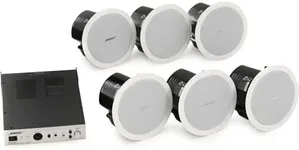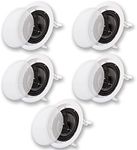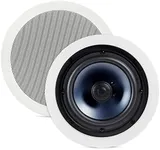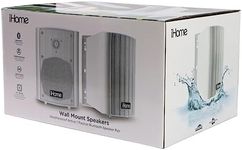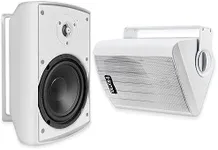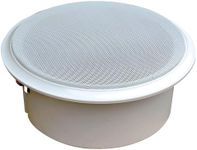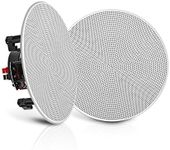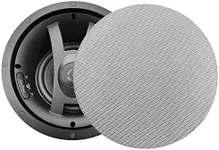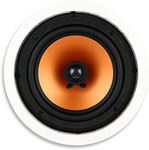Buying Guide for the Best Outdoor In Ceiling Speakers
Choosing the right outdoor in-ceiling speakers can greatly enhance your outdoor entertainment experience. These speakers are designed to be installed in the ceiling of outdoor spaces like patios, decks, or gazebos, providing high-quality sound while being discreet and out of the way. When selecting outdoor in-ceiling speakers, it's important to consider several key specifications to ensure you get the best fit for your needs. Understanding these specs will help you make an informed decision and enjoy your outdoor audio setup to the fullest.Weather ResistanceWeather resistance is crucial for outdoor in-ceiling speakers as they will be exposed to various elements like rain, humidity, and extreme temperatures. This spec indicates how well the speakers can withstand these conditions. Look for speakers with a high IP (Ingress Protection) rating, which measures their resistance to dust and water. For outdoor use, an IP rating of at least IPX4 is recommended, but higher ratings like IPX6 or IPX7 offer better protection. Choose a level of weather resistance based on the typical weather conditions in your area.
Power HandlingPower handling refers to the amount of power (measured in watts) that the speakers can handle without being damaged. This is important because it affects the volume and clarity of the sound. Speakers with higher power handling can produce louder and clearer sound without distortion. If you plan to use the speakers for large gatherings or parties, look for models with higher power handling (e.g., 100 watts or more). For casual listening in smaller spaces, lower power handling (e.g., 50 watts) may be sufficient.
Frequency ResponseFrequency response indicates the range of sound frequencies the speakers can reproduce, measured in Hertz (Hz). A wider frequency response means the speakers can produce a broader range of sounds, from deep bass to high treble. For outdoor in-ceiling speakers, a typical frequency response range might be 50 Hz to 20,000 Hz. If you enjoy a full, rich sound with deep bass, look for speakers with a lower minimum frequency. If clarity and detail in high frequencies are more important, focus on the upper end of the range.
SensitivitySensitivity measures how efficiently the speakers convert power into sound, expressed in decibels (dB). Higher sensitivity means the speakers can produce more sound with less power. This is important if you want to achieve high volume levels without needing a powerful amplifier. Sensitivity ratings typically range from 85 dB to 100 dB. For outdoor use, where you might need more volume to cover larger areas, look for speakers with higher sensitivity (90 dB or above). For smaller, more intimate spaces, lower sensitivity may be adequate.
Installation EaseInstallation ease refers to how simple it is to install the speakers in your ceiling. This includes factors like the size and shape of the speakers, the type of mounting hardware included, and whether the speakers come with clear instructions. Some speakers are designed for easy DIY installation, while others may require professional help. If you're comfortable with DIY projects, look for speakers with user-friendly installation features. If not, consider hiring a professional to ensure the speakers are installed correctly and safely.
Sound QualitySound quality encompasses various factors like clarity, balance, and richness of the audio produced by the speakers. This is subjective and can vary based on personal preference. To gauge sound quality, consider reading reviews, listening to demo units if possible, and checking for features like tweeters and woofers that enhance different aspects of the sound. If you prioritize high-fidelity audio, look for speakers known for their excellent sound quality. If you're less particular, you might prioritize other features like durability or ease of installation.



